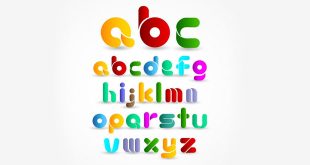Read the article below to learn when and where to use a comma.
Comma Usage
- Commas are used when the objective is to avoid confusion. The use of comma is essential when separating independent clauses. E.g., The kid was hurt, but he didn’t cry.
- Commas should be used while separating two adjectives qualifying the same noun. E.g. Thomas is a strong, well-built man.
- It must be used when a name is being used in a sentence and a person is being addressed directly. E.g. Will you, Kunal, help me lift this box?
- A comma must be used to separate dates and addresses. E.g. Caroline met her boyfriend on October 3, 2010 in the splendid city of Sydney.
- While mentioning a state and a city consecutively in a sentence, a comma should be used in between. If, however, the abbreviation of a city is used then a comma need not be used. E.g. ‘I lived in Tamil Nadu, India, for ten years.’ or ‘I lived in San Francisco, California for ten years’.
- Commas can be used to highlight or give a break to degrees or titles used with names in a sentence. It is also no longer right to use commas around Jr. or Sr. Commas can also never be used to ‘set off’ II, III and so on. E.g. Eric Rogers, C.E.O, was the first one to arrive at the party.
- When introductory words like, well, yes, no, why, etc., begin a sentence, use a comma after them. E.g., ‘Why, that’s great!’ or ‘No, I will not go today’.
- Commas are very commonly used when the need is to add a break or an interval to expressions that otherwise interfere the flow of a sentence. E.g. I can’t believe this, although I should not believe this, I will.
- You will have to use a comma when you start a sentence with a clause that can be described as weak. However, you will not need a comma when the sentence starts off with a strong clause and is then followed by a weak one. E.g. If I don’t know what to do, I will come to you for help.
- A comma is necessary while shifting from main discourse to a quotation. Put the comma in between the fragment of the quotation where the explanatory words about the speaker come. E.g., “Do not jump to conclusion”, said he, “before hearing the complete story”.
- A comma must be used when an –ly adjective is used with other adjective. E.g. The Queen was a lovely, young lady.
- A comma has to be used when the phrases which comprise more than three words start off a sentence. However, if the phrase that starts off a sentence consists of equal to less than three words, the use of a comma is optional. E.g. To score a century on this ground, you have to play well.
- If any particular thing or even a particular person is identified properly, the description that follows must be considered superfluous, which is where commas come into play. E.g., Velutha, of strong body and weak mind, fell in love with them, the two-egged twins.
- A comma can be used when you are looking to separate two strong clauses that are otherwise joined by a coordinating conjunction. However, if the clauses are too short, the comma can be chosen to be ignored. E.g., They are tough people who know what they are doing.
- If there is no subject in front of the second verb, do not use a comma. This is as good as a rule of thumb. E.g., There are weak and hungry people all over the world.
- Commas can be used to introduce or break the flow in direct quotations, specifically the ones that amount to lesser than three lines.
- A comma can be used to separate a statement from a question. E.g., What is this, you say.
The usage of comma is not restricted only to the above mentioned cases and it spreads way beyond the domain that has been expressed so far. The idea behind presenting this write-up is to explain that a comma, as trivial as it may look, isn’t a punctuation that you’d like to mess with. It is the second most common punctuation mark after the full-stop and perhaps the most commonly misunderstood one also. The trick here would be to not give up, and keep trying to understand the comma till it finally reveals all its secrets to you. It isn’t as difficult as you think and neither is it as insignificant.
 Class Notes NCERT Solutions for CBSE Students
Class Notes NCERT Solutions for CBSE Students


